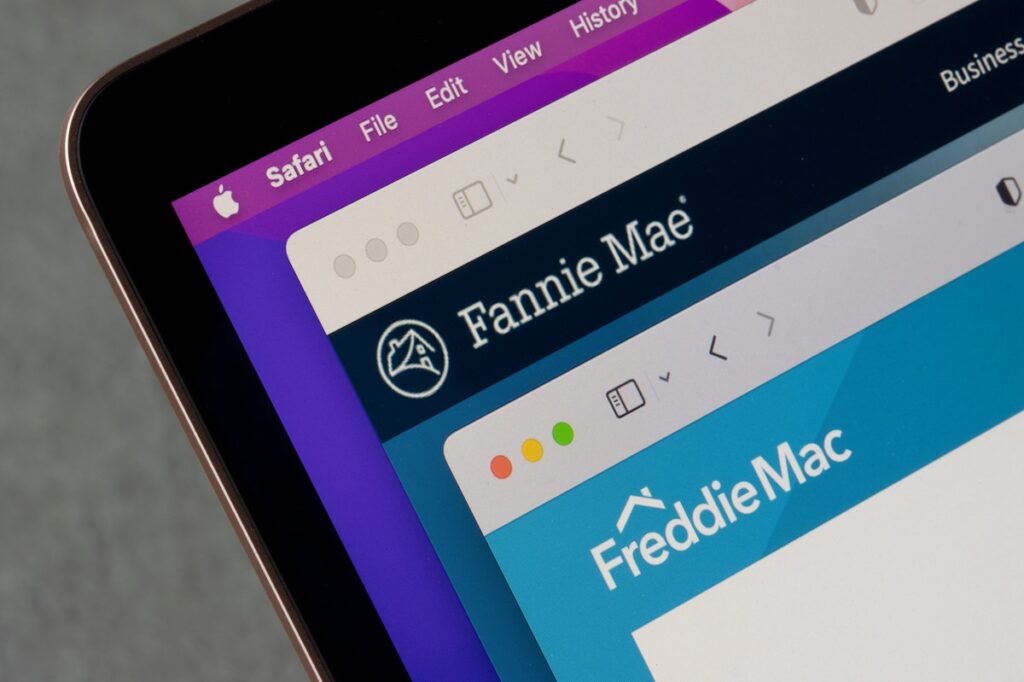President Donald Trump has taken to social media outlet TruthSocial in making his intentions known on the long-discussed privatization of Fannie Mae and Freddie Mac.
“I am giving very serious consideration to bringing Fannie Mae and Freddie Mac public, ” said President Trump via a post via his TruthSocial account @realDonaldTrump. “I will be speaking with Treasury Secretary Scott Bessent, Secretary of Commerce Howard Lutnick, and the Director of the Federal Housing Finance Agency, among others, and will be making a decision in the near future. Fannie Mae and Freddie Mac are doing very well, throwing off a lot of CASH, and the time would seem to be right. Stay Tuned!!”
Fannie Mae and Freddie Mac, the government-sponsored enterprises (GSEs), help provide stability and affordability to America’s home mortgage market. The National Association of Realtors (NAR) reports that Fannie and Freddie support approximately 70% of the U.S. mortgage market.
On September 6, 2008, with consent of both Fannie Mae’s and Freddie Mac’s Boards of Directors, the Director of the Federal Housing Finance Agency (FHFA) exercised statutory authority to place each GSE into conservatorship. This move established the two conservatorships in response to a deterioration in the housing markets that severely damaged the financial condition of each, and left both of them unable to fulfill their missions without government intervention.
The Federal Housing Enterprises Financial Safety and Soundness Act of 1992 as amended by the Housing and Economic Recovery Act of 2008, authorizes FHFA as conservator to “take such action as may be necessary to put the regulated entity in a sound and solvent condition; and appropriate to carry on the business of the regulated entity and preserve and conserve the assets and property of the regulated entity.”
Rep. Scott Fitzgerald took to social media platform Facebook to support President Trump’s intentions to bring the GSEs public.
“The GSE conservatorship has gone on for far too long. I agree with President Trump that the government should sell its stake in Fannie Mae and Freddie Mac to bring in more private capital. The funds can be used to pay for middle-class housing,” said Rep. Fitzgerald via his Facebook account.
FHFA Director William J. Pulte recently appeared on CNBC’s Squawk Box and discussed privatization of the GSEs, stating, “We’ll see. We have a great deal-maker as President of the United States. We have, for the first time, a full-term confirmed Director of the FHFA, we have a great Treasury Secretary, and we have a great President, and I look forward to working with them. My job right now is focused on making sure there is operational efficiencies … that the bloat is gone, that these businesses are safe and sound, and frankly that they are in tip-top shape to do whatever the President elects to do.”
In another recent appearance at the Mortgage Bankers Association’s (MBA) Secondary & Capital Markets Conference, FHFA Director Pulte discussed how Fannie Mae and Freddie Mac could operate more efficiently through recent reductions in workforce at each GSE.
“How do we get this from being a bloated enterprise, and get it on the treadmill, get it running efficiently,” Pulte said of streamlining operations at the GSEs. “Because an efficient, well-run Fannie and Freddie is a safe and sound mortgage market.”
Barron’s reports that Fannie Mae and Freddie Mac stocks traded more than 30% higher on Thursday after President Trump’s post on the GSEs’ going public.
In a January 2025 paper issued by Moody’s Analytics, Fannie and Freddie’s Implicit Guarantee—Another Iceberg on the Path to Privatization, authors Jim Parrott, Nonresident Fellow at the Urban Institute and co-owner of Parrott Ryan Advisors, and Dr. Mark Zandi, Chief Economist of Moody’s Analytics, wrote about the hurdles that must be overcome to bring Fannie and Freddie public.
“It would eventually involve the largest initial public offering in history, resolving a taxpayer investment of $330 billion that cannot easily be written down, and setting a fee for Treasury’s $250 billion line of credit that reflects its value but does not bankrupt the GSEs, all while transitioning much of the nation’s mortgage infrastructure into private hands during the worst housing affordability crisis in a generation,” stated the authors in the report.
In separate findings, Dr. Zandi estimated in 2024 that privatization of the GSEs could cost the typical American taking out a new mortgage between $1,800-$2,800 annually.
Co-authors Parrott and Dr. Zandi also wrote, “The GSEs’ conservatorship must ultimately come to an end, if only to bring long-term stability to the well-functioning housing finance system we have today. But it should only be done in a way that actually improves the system, ideally with legislation that locks in what works and makes explicit the full breadth of government support the GSEs depend on to play the role we need of them. After all, ending the conservatorship is in itself of no value and would come at considerable cost if it leaves the system less liquid and stable.”






